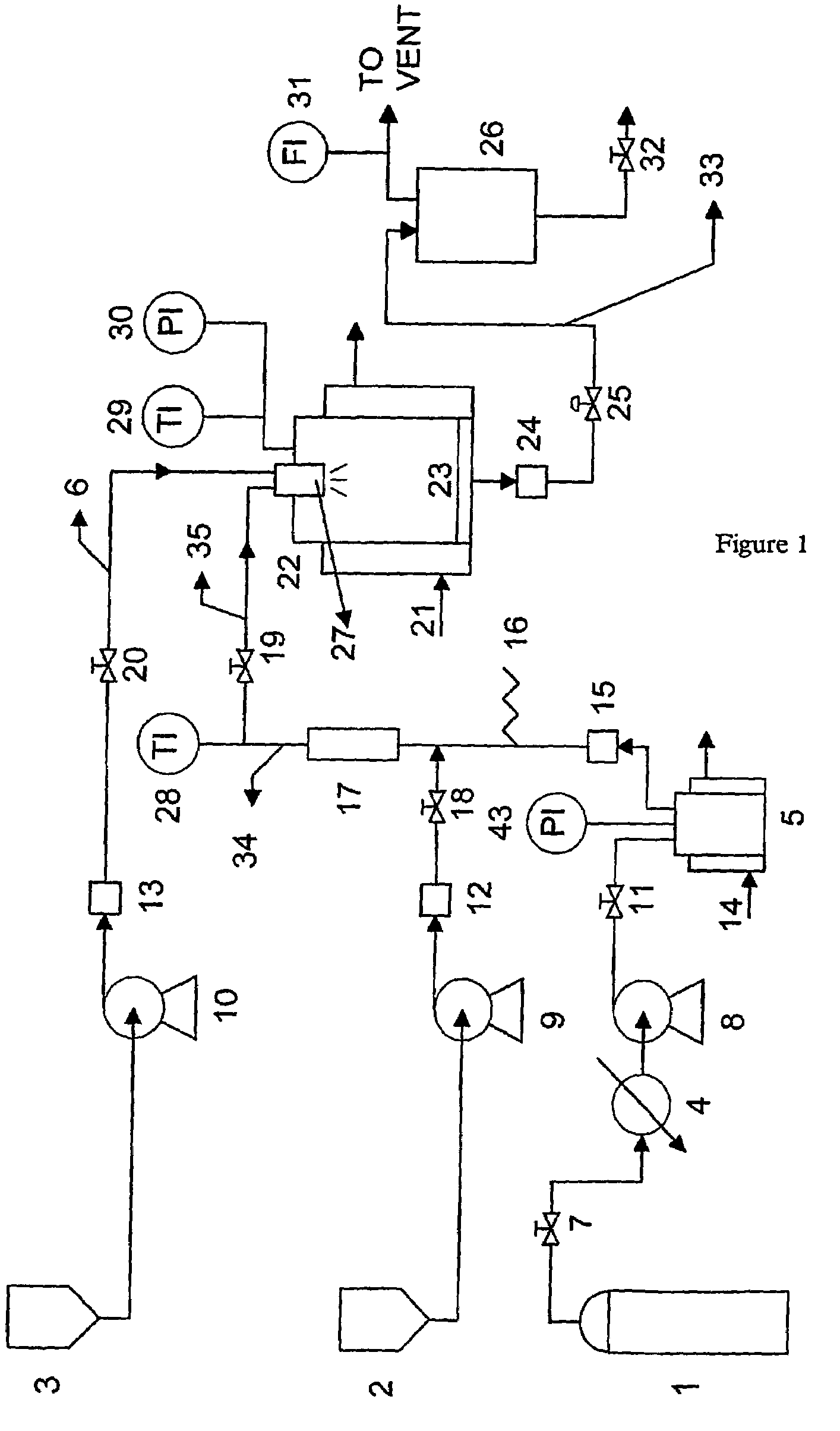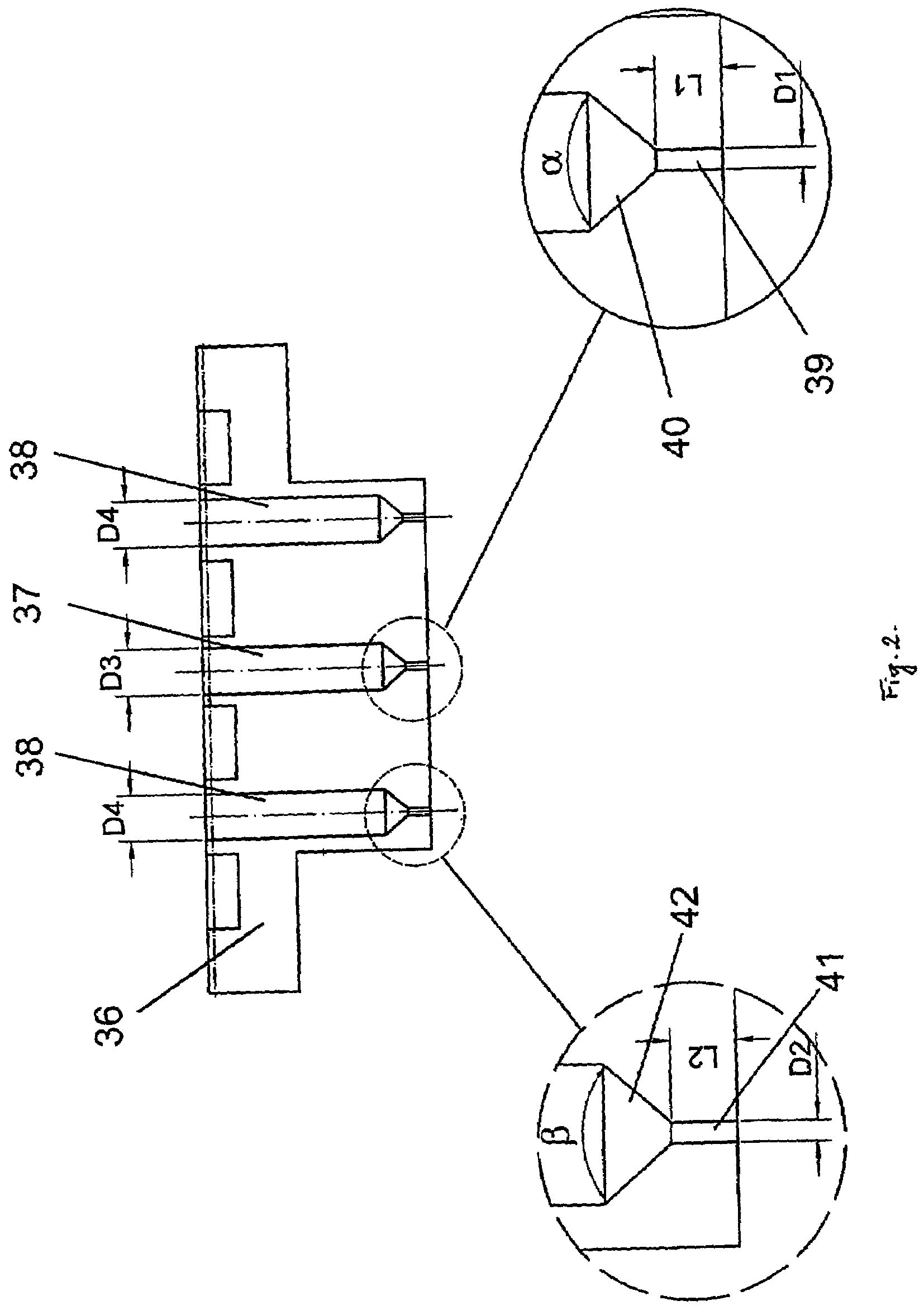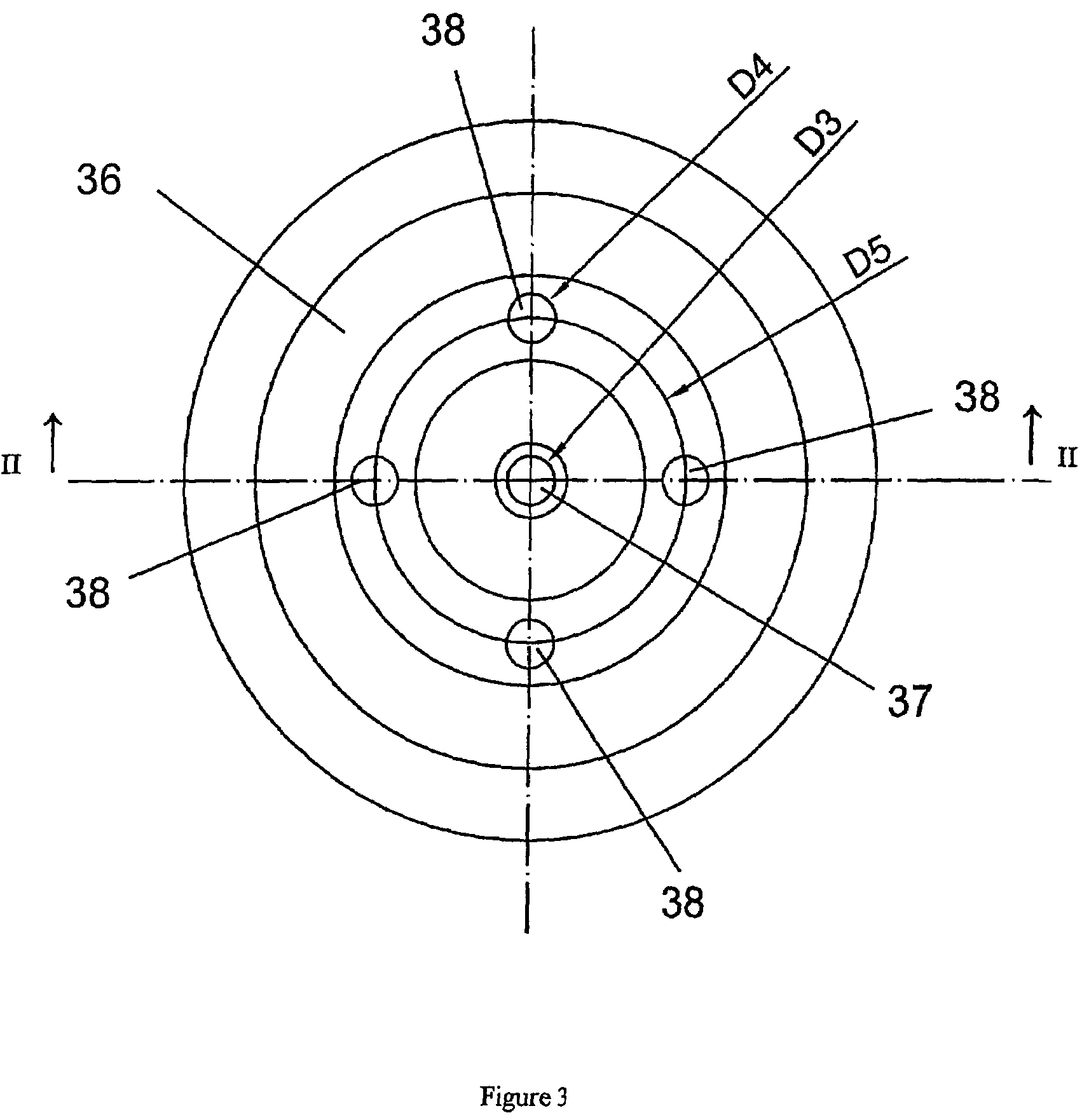Supercritical fluids processing: preparation of protein microparticles and their stablilisation
a technology of supercritical fluids and protein, applied in the direction of peptide/protein ingredients, bulk chemical production, therapy, etc., can solve the problems of thermal degradation, low efficiency, low yield, etc., and achieve the effect of enhancing the solubility of the “solvent”
- Summary
- Abstract
- Description
- Claims
- Application Information
AI Technical Summary
Benefits of technology
Problems solved by technology
Method used
Image
Examples
example 1
Preparation of Alkaline Phosphatase (ALP) / Trehalose Co-Precipitate Particles
[0072]In this example, the method of the invention is used to co-precipitate mixtures of alkaline phosphatase (ALP) and trehalose.
[0073]Solutions containing ALP (SIGMA Chemicals) at concentration 0.2% w / w and trehalose (SIGMA Chemicals) at concentration within the range 0-2% w / w in deionized water were used.
[0074]The ALP / Trehalose ratios of the obtained powders were as follow: 1:10, 1:2 and 1:0. Carbon dioxide as supercritical fluid and ethanol as modifier were used.
[0075]The solution was fed into the particle formation vessel 22 by means of pump 10 at a flow rate of 0.2 g / min. Supercritical carbon dioxide was fed by means of pump 8 at a flow rate of 30 g / min, ethanol was fed by means of pump 9 to line 34 at a flow rate of 4 g / min and it was mixed with supercritical carbon dioxide prior to entry into the particle formation vessel.
[0076]The supercritical fluid was injected into the particle formation vessel t...
example 2
Preparation of Lysozyme / Trehalose Co-Precipitate Particles
[0088]In this example, the method of the invention is used to prepare co-precipitate powders using lysozyme and trehalose.
[0089]Solutions containing lysozyme (SIGMA Chemicals) at concentration within 0.2-1% w / w and trehalose (SIGMA Chemicals) at concentration within the range 0-2% w / w in deionized water were used. The lysozyme / trehalose ratios of the obtained powders were as follows: 1:10, 1:5, 1:2, 1:1, 2:1, 4:1 and 1:0 (Table 2).
[0090]Carbon dioxide was used as supercritical fluid and ethanol as modifier.
[0091]The aqueous solution containing the enzyme and the stabiliser was fed into the particle formation vessel 22 by means of pump 10 at a flow rate of 0.2 g / min. Supercritical carbon dioxide was fed by means of pump 8 at a flow rate of 30 g / min, ethanol was fed by means of pump 9 to line 34 at a flow rate of 4 g / min and it was mixed with supercritical carbon dioxide before entering into the particle formation vessel.
[0092]...
PUM
| Property | Measurement | Unit |
|---|---|---|
| length | aaaaa | aaaaa |
| diameter | aaaaa | aaaaa |
| temperature | aaaaa | aaaaa |
Abstract
Description
Claims
Application Information
 Login to View More
Login to View More - R&D
- Intellectual Property
- Life Sciences
- Materials
- Tech Scout
- Unparalleled Data Quality
- Higher Quality Content
- 60% Fewer Hallucinations
Browse by: Latest US Patents, China's latest patents, Technical Efficacy Thesaurus, Application Domain, Technology Topic, Popular Technical Reports.
© 2025 PatSnap. All rights reserved.Legal|Privacy policy|Modern Slavery Act Transparency Statement|Sitemap|About US| Contact US: help@patsnap.com



